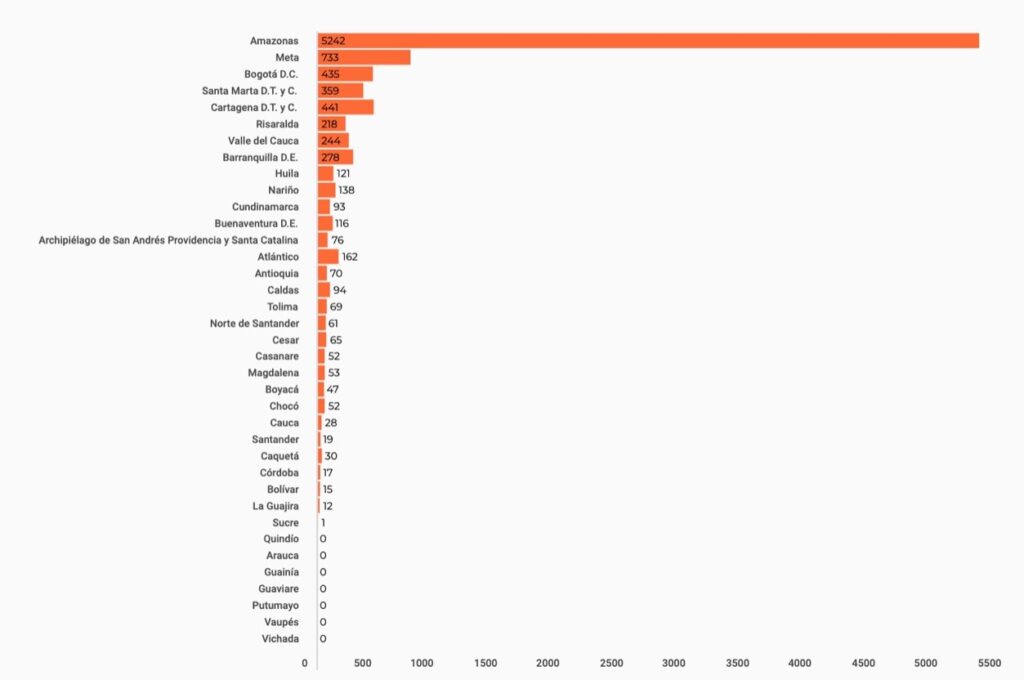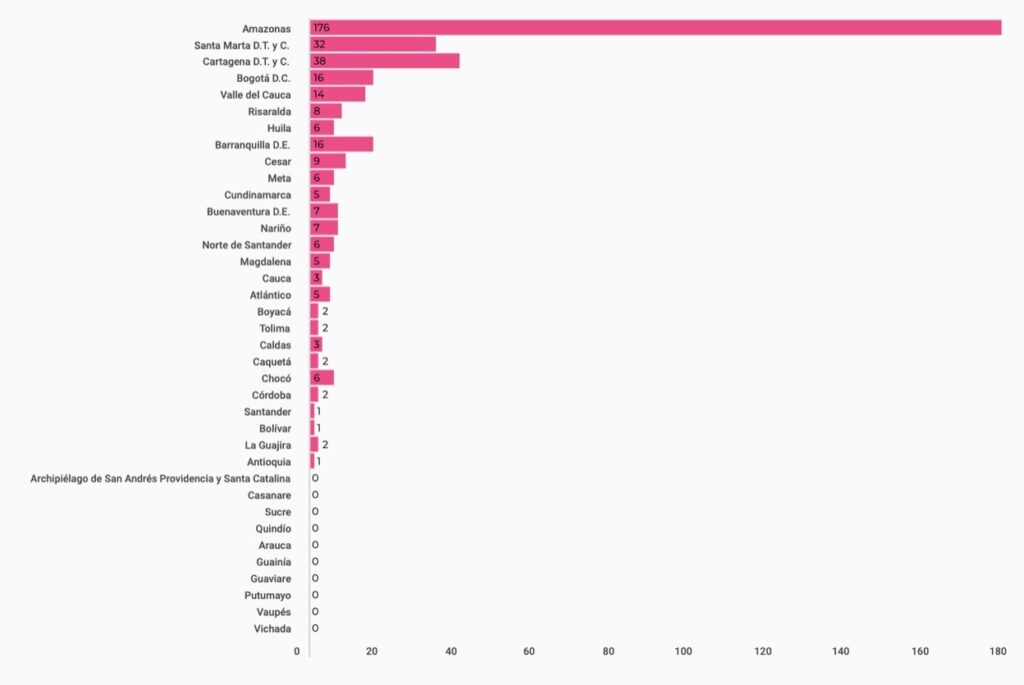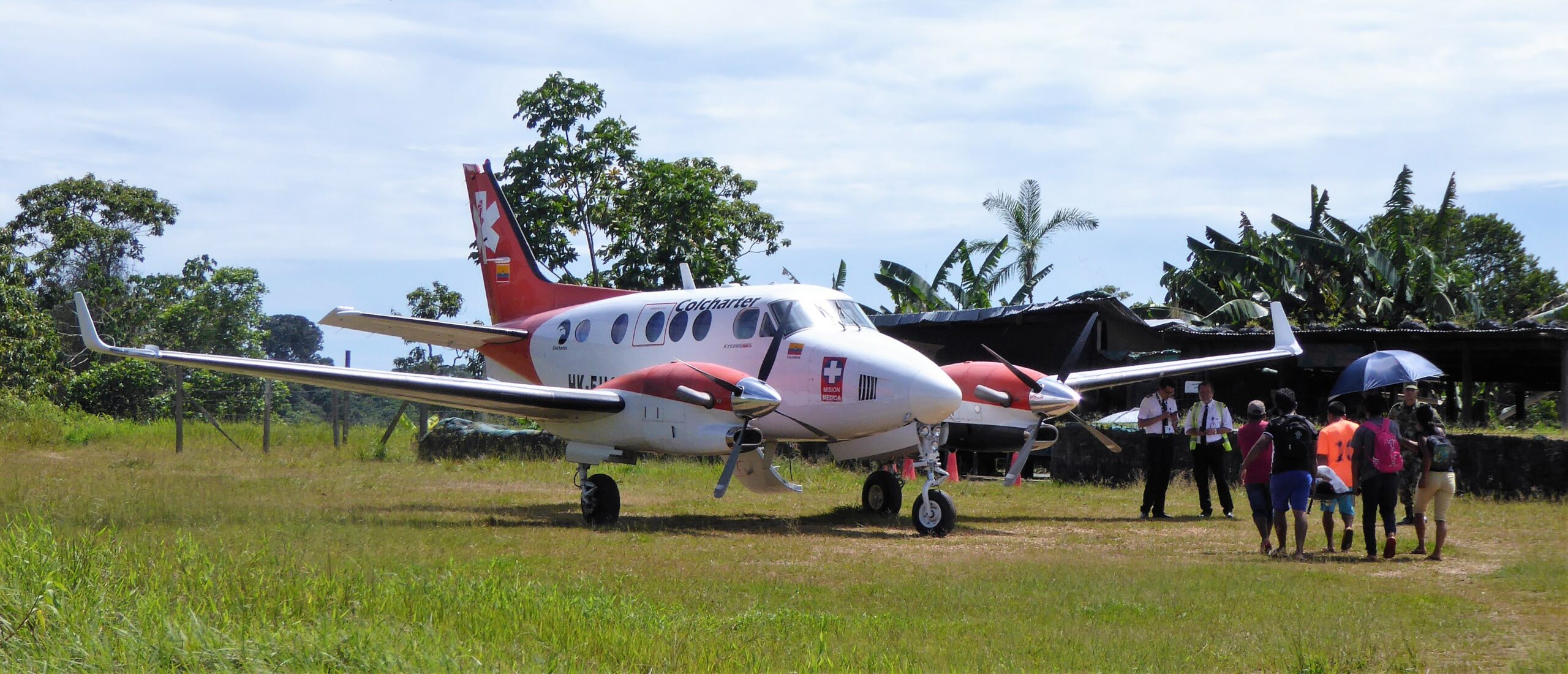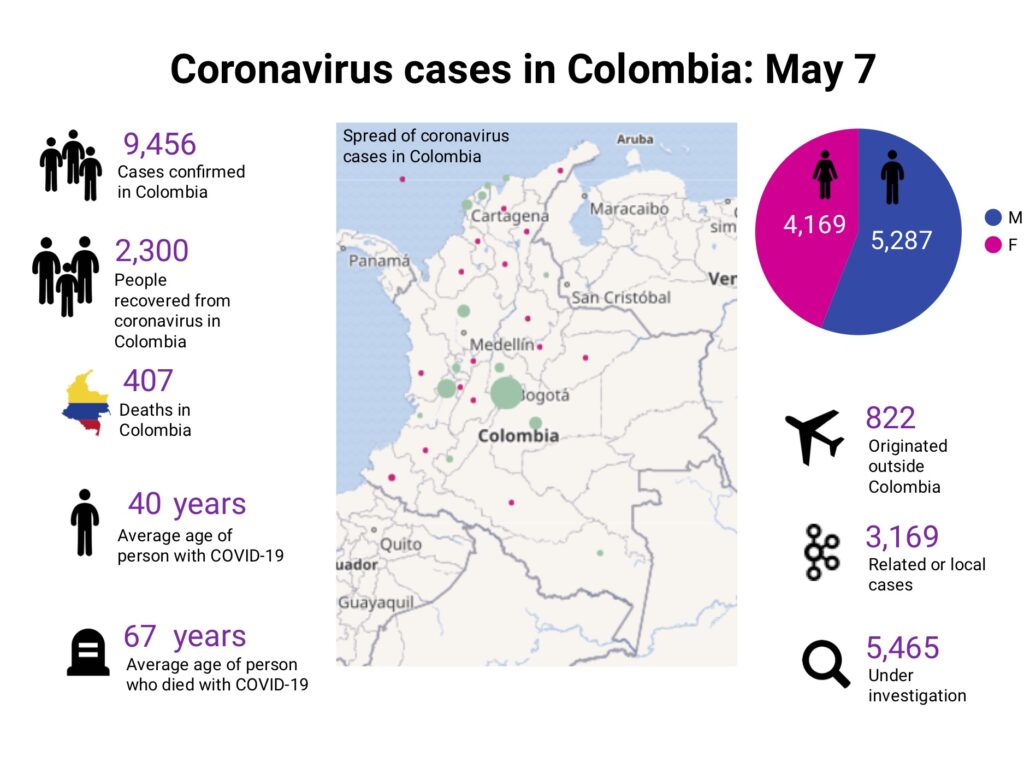
Our regular roundup of COVID-19 cases in Colombia.
Key points on coronavirus in Colombia:
- 407 deaths and 9,456 cases across 31 departments
- Quarantine extended until May 25 but rules relaxed
- Confirmed cases in Amazonas continues to rise
- INS report shows peak could be July or August
We’re now 48 days since lockdown measures started in Bogotá and construction and manufacturing workers have been able to return to their jobs, albeit under fairly strict protocols. President Duque announced on Tuesday that other sectors – such as the car and furniture industry – would be able to follow suit after May 11. Young people (aged 6 to 17) will be allowed out to exercise for half an hour, three days a week. Municipalities with no cases of coronavirus will be able to open up again, as long as large gatherings remain banned.
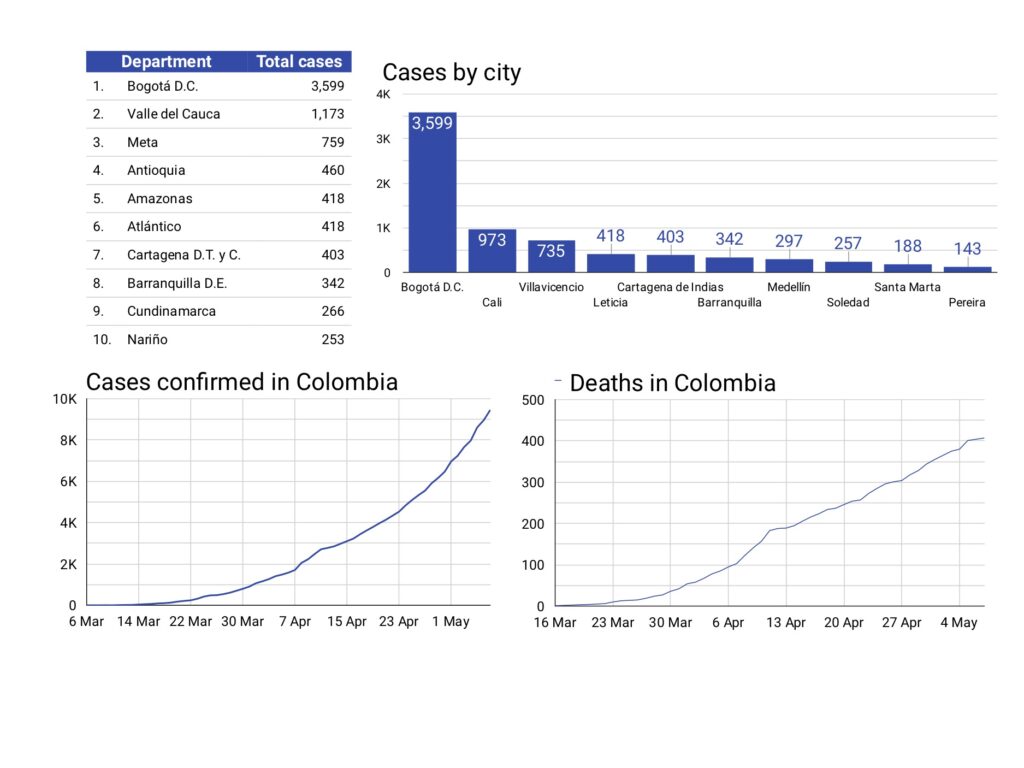
It’s 62 days since the first case (March 6) in Colombia and the latest stats show:
- 2,300 COVID 19 patients recovered (average age 40)
- 6,102 patients are sick but still at home (average age 37)
- 407 people confirmed to have the virus have died (average age 67)
- There are 647 hospitalised cases, 129 of which are high-risk patients in ICU intensive care units
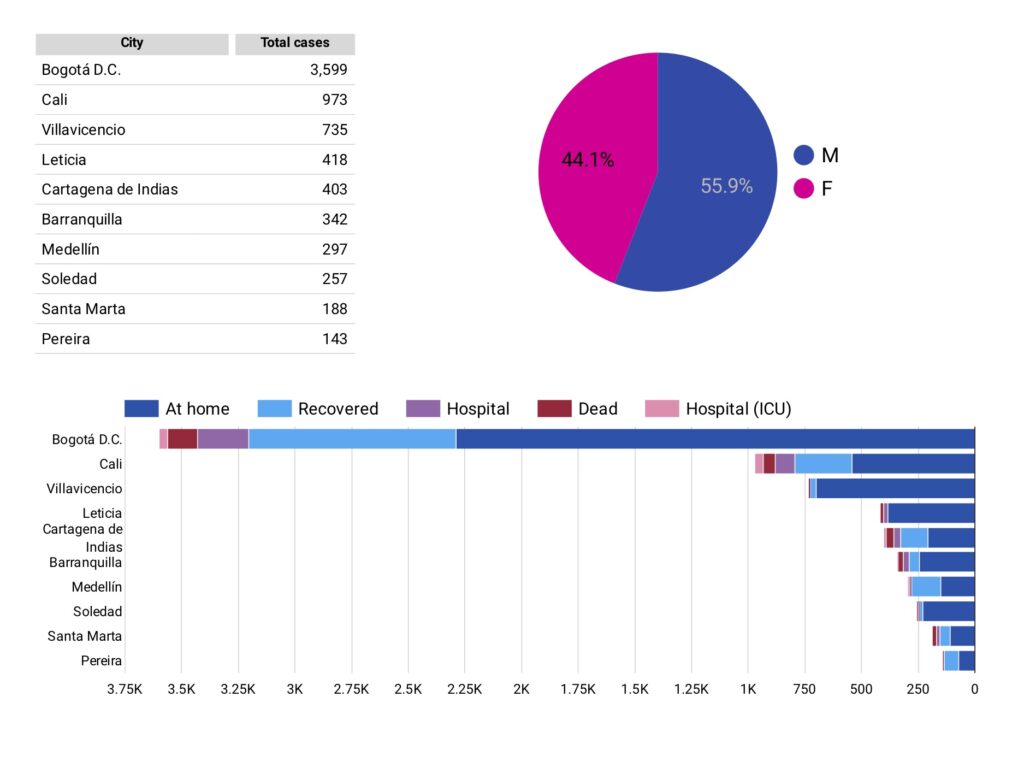
July-August peak
A report from the INS which breaks down possible scenarios for the spread of COVID-19 shows that even when you factor in the problems with accurate measurements, Colombia is far ahead of the worst-case scenario. The unanswerable question is the degree to which the quarantine measures are simply pushing the problem further into the future and how much they are buying breathing space to make them more manageable. And – as with most things – the answer is a bit of both.
“It is evident that any measure must be carried out in the long term, and its application for only two to four weeks would delay the peak of the epidemic, but not its magnitude,” say the report authors.
The report looks at a number of factors, breaking the population down into three groups: Those who are susceptible and might catch the virus, those who are infected and might transmit the virus, and those who have recovered and (we hope) are immune.
Read our latest coverage on the coronavirus in Colombia
According to the report, if Colombia had done nothing, by day 100 (June 14), there would be over 30 million cases and roughly 5 million people would be in hospital. Of those, 1.3 million would need the ICU, which is a lot more than the 5,485 ICU beds the ministry of health recently said it had available.
Using data from other countries, it tries to predict the possible impact of measures such as shutting down schools or social isolation. An important figure that we still don’t know is the percentage of asymptomatic infections. This has a big impact on the projections because the higher the number of asymptomatic cases, the less strain there will be on the health services.
What’s interesting is that the updated estimations which factor in the quarantine project the peak for July or even August. But whether there will be enough hospital beds depends a lot on how the relaxation of the rules is implemented.
Amazonas
The spike in cases in the Amazonas today is certainly a cause for concern, though can be partly explained by a jump in testing. The INS reported 188 more cases today, taking the total to 418.
As we reported last week, Amazonas has the highest number of both cases and deaths per million inhabitants, by a long way. Wilson Arias, a senator for the Polo Democrático party, tweeted on April 29 that if the government did not send help, it would be a “genocide.”
The high figure is in part due to spread from neighbouring Brazil and exacerbated by a lack of health facilities. The government have sent both medical aid and security forces with a view to improving testing, improving medical care and patrolling the border.
Given the coronavirus incubation period and time lag in testing, we can expect to see the numbers continue to increase and only time will tell if the measures to control the spread have worked.
